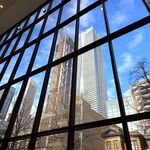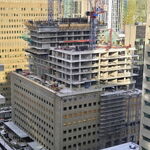Woodbridge_Heights
Senior Member
I *think* I get what you are trying to say, but some of the comparative statements confuse me.
Roadways aren't treated as public assets - they *are* public assets, paid for by general revenue taxes and user fees. Railways are private property owned and operated by for-profit companies that pay taxes on their assets and business income. They might provide a public benefit (a term not legally used in Canada), but it could be argued that so does Amazon or Air Canada.
Stepping away from the cost of taking a truck out onto the road, accessing CN or CP lines means you are using their property, facilities and staff.
Roads haven't always been public assets. Many roads in the early automotive era were built by private companies/individuals, charged tolls for access, and were (I'm assuming) treated as private property. It was only once we decided as a society that it would be better to have the road network be run by the public and held by the public that it became so. The distinction between roads/public and rails/private is simply the decision that was made.
Regarding Air Canada, there really isn't any comparable to roads/rails in the airline industry because planes travel in the air which no one own, not on roads or rails. The closest construct would be the structuring of the airspace into distinct regions, flight paths, and managing those through ATC/regulations/etc. And this is operated by NAV Canada, a public entity.
Amazon is not a comparable because it doesn't have a physical network for it's distribution in the way that roads/rails do.
Of course I wouldn't (well unless I were planning to expand/grow my business). Again this is kind of my point. CN/CP don't want to cooperate and share their rails (most of which were built with the assistance of public dollars) than maybe they stop getting public funds or enjoy the benefits of having these massive networks at their disposal. Similar to how Air Canada (also a recipient of significant public funds) is told by the government that is must provide certain services.If you were a business, would you?





